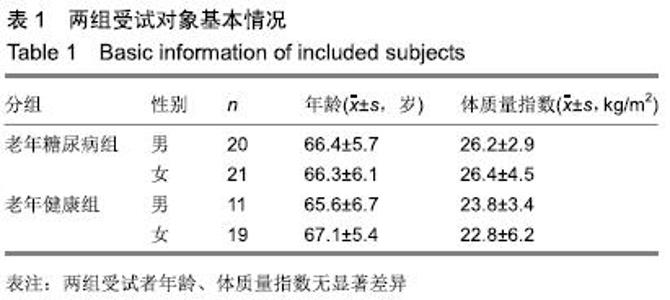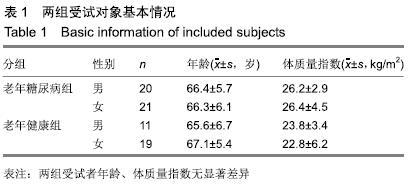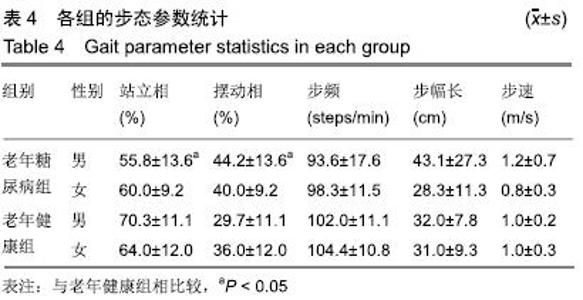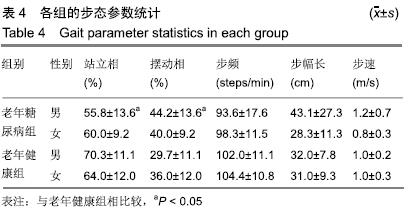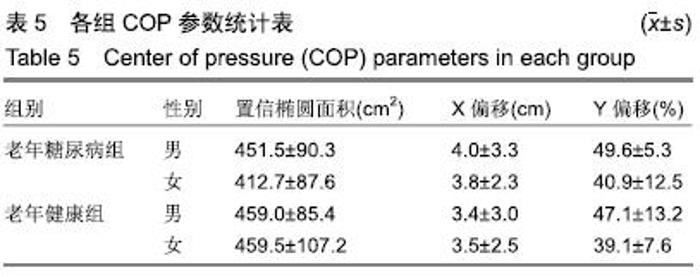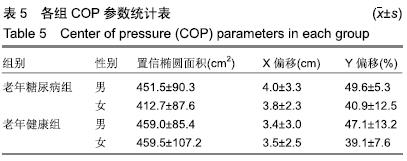[1] HONG X, CHEN X, CHU J, et al. Multiple diabetic complications, as well as impaired physical and mental function, are associated with declining balance function in older persons with diabetes mellitus.Clin Interv Aging. 2017;12:189-195.
[2] 尤黎明,吴瑛.内科护理学[M]. 5版. 北京:人民卫生出版社, 2012: 579.
[3] 蒋娅.2型糖尿病患者自然步态下赤足足底压力特征分析及影响因素调查[D].广州:南方医科大学,2013.
[4] PATRY J, BELLEY R, CÔTÉ M, et al. Plantar pressures, plantar forces, and their influence on the pathogenesis of diabetic foot ulcers: a review.J Am Podiatr Med Assoc.2013;103: 322-323.
[5] 董海山,吕肖峰.糖尿病合并周围神经病变患者足底压力的研究[J].中国医药导报, 2011,8(14):36-38.
[6] FERNANDO ME, CROWTHER RG, LAZZARINI PA,et al.Gait parameters of people with diabetes-related neuropathic plantar foot ulcers.Clinical Biomechanics.2016;37:98-107.
[7] 贾川,瞿玉兴.糖尿病足步态变化的研究进展[J].医学综述, 2018, 24(20): 4086-4091.
[8] 李晓林.老年Ⅱ型糖尿病患者自然行走时足底压力研究及应用[D].天津:天津科技大学,2019.
[9] BENNETTS CJ.Clustering and classification of regional peak plantar pressures of diabetic feet. J Biomech. 2013;46(1):19-25.
[10] 李世光,贾红毅,赵建波.糖尿病患者与健康人足底压力分布特征的比较[J].中华糖尿病杂志,2013,21(5):439-441.
[11] 杨晓玲.足底压力改变与2型糖尿病患者周围神经病变病情关系的研究[J].临床和实验医学杂志,2015,14(4): 259-263.
[12] 王爱红,李家兰,许樟荣,等.2型糖尿病患者的足底压力研究[J].中华内分泌代谢杂志,2005,21(6):500-501.
[13] 张勇,陈永翀.活动性糖尿病足溃疡患者足底压力分布特点分析[J].山东医药,2018,58(12): 94-97.
[14] 程磊.有跌倒史老年人群足底压力分布特征分析[D].长春:东北师范大学, 2010.
[15] 孙天赦.老年人常速与快速行走足底压力分布特征分析[D].长春: 东北师范大学, 2007.
[16] STEWART S, CARROLL M, BRENTON-RULE A, et al. Region-specific foot pain and plantar pressure in people with rheumatoid arthritis: A cross-sectional study.Clin Biomech. 2018; 7(55):14-17.
[17] 王莉,于卫华,徐忠梅.社区老年人常速行走和双重任务行走步态特征及其与跌倒的关系研究[J]. 中国全科医学,2018,21(4): 420-425.
[18] 张晓彤.糖尿病患者足底压力及步态特征分析与应用研究[D]. 天津:天津科技大学, 2019.
[19] 庄薇.小腿外加负荷对短跑最大速度阶段下肢神经肌肉征召特性的影响[D].上海:上海体育学院,2017.
[20] 李文霞,罗祥蓉,曹瑛,等.糖尿病周围神经病变患者足底压力与步态的变化[J].广东医学,2017,38(6):859-863.
[21] 徐忠梅,于卫华,吴梦余,等.老年2型糖尿病患者双重任务行走步态特征及其与害怕跌倒的相关性研究[J]. 中华护理杂志,2018, 53(1): 22-26.
[22] 钱荷云.基于日常生活活动的足底压力分析研究[D].天津:天津科技大学, 2015.
[23] 黄玲晓.糖尿病人足底压力分布研究及其临床应用[D].天津:天津科技大学, 2017.
[24] 朱瑶佳,霍洪峰.走与跑运动模式下的足底压力中心轨迹特征[J].中国组织工程研究,2018,22(31):4987-4992.
[25] 梁玉,霍洪峰,杨静怡,等.老年人步行时足底压力及步态特征的增龄性变化[J].中国老年学杂志,2013,33(13): 3038-3040.
[26] TANDER B, ATMACA A, ULUS Y, et al.Balance performance and fear of falling in older patients with diabetics: a comparative study with non-diabetic elderly.Turk J Phys Med Rehab. 2016;62(4): 314-322.
[27] LALIT KISHORE,RANDHIR SINGH.Effects of different homeopathic potencies of Cephalendra indica in treatment of neuropathic pain in streptozotocin induced diabetes.Bulletin of Faculty of Pharmacy. Cairo University.2017;(55):273-280.
[28] 杨青,钱晓路,白姣姣,等.社区糖尿病患者足底压力与足部保护知识的相关性研究[J].护理学杂志,2010,25(1):1-4.
[29] 符霞军,谢翠华,蒋娅,等.糖尿病足底压力异常患者减压治疗效果分析[J].护理学杂志,2014,20(5):14-16.
[30] PATAKY Z,GOLAY A, FARAVEL L,et al. The impact of callosities on the magnitude and duration of plantar pressure in patients with diabetes mellitus. A callus may cause 18 , 600 kilograms of excess plantar pressure per day.Diabetes Metab. 2002;28(5): 356-361.
[31] 何红,许亚红,徐国丽,等.“足底操”对0级糖尿病足患者周围神经病变及足底压力的影响[J].现代临床护理, 2017,16(2):51-56.
|
